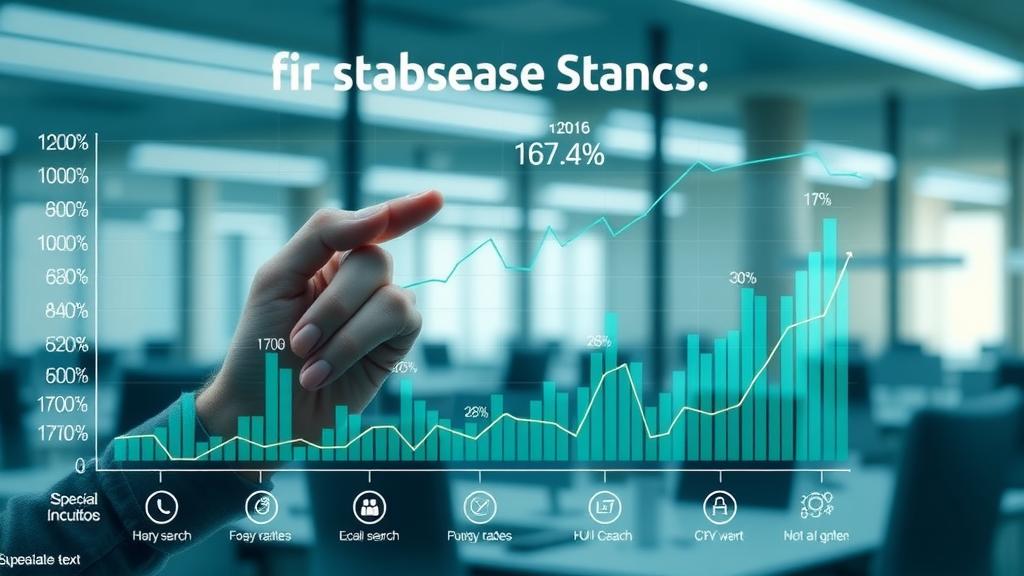Did you know that over 46% of all Google searches have a local intent? Even more startling: nearly 80% of consumers who conduct a local search on their phone visit a store within a day. If your business isn’t leveraging local SEO techniques, you could be invisible to nearby customers ready to buy. In this comprehensive guide, we’ll unlock actionable strategies that turn local searches into steady revenue — showing you exactly how to dominate the competition in your neighborhood, town, or city. Read on to transform the way your business is found online!
Why Local SEO Techniques Are Essential for Local Business Growth
As consumer habits continue to evolve, local SEO techniques have become a non-negotiable asset for any business that serves their community. The rise of smartphones and location-based searches means more people are looking for products and services near them — right now. If your business isn’t showing up in these critical search results, your competitors are likely capturing those ready-to-buy customers. Harnessing local SEO ensures that your business not only appears in front of your target audience but stands out against surrounding competition at the precise moment potential customers are eager to make a decision.
For small businesses, implementing local SEO isn’t just about climbing to the top of Google; it’s about building trust, increasing foot traffic, and converting online visibility into real-world sales. From optimizing your Google Business Profile to boosting your presence in Google Maps and local directories, these techniques are designed to work together, crafting a cohesive local SEO strategy that delivers measurable results where it matters most. Let’s explore the data and methods that can help elevate your business success this year.
The Exponential Growth of Local Searches: A Statistical Perspective
Local searches have seen exponential growth in recent years. According to industry studies, searches containing phrases like “ near me ” have more than doubled in the last two years. Consumers are now conditioned to use their smartphones to find local businesses instantly, whether seeking a nearby coffee shop, an emergency plumber, or the closest pet store. These changing search habits drive vast opportunity for businesses that effectively harness local SEO techniques .
An incredible 78% of mobile local searches result in offline purchases, and 61% of all mobile searchers are more likely to contact a local business if they have a mobile-friendly site. This shows not only the rising significance of being discoverable locally but also highlights how integral it is for your business profile and website to be optimized for local search behaviors. The statistics speak volumes: if you want to stay competitive and relevant in today’s marketplace, a laser focus on local SEO is essential.

How Most Customers Discover Local Businesses Online
Google Search remains the primary way people discover local businesses. When someone needs a product or service, they’re far more likely to type “best bakery near me” or “plumber in [City]” than to remember a business from a billboard or flyer. This is where optimizing your Google Business Profile and local directory listings plays a pivotal role. Having complete, accurate business information — like hours, address, and reviews — ensures that search engines prioritize your business profile in local results and maps queries.
Google Maps has also surged in popularity as a direct way for potential customers to find local businesses. A well-optimized business profile on Google Maps, complete with up-to-date photos and positive reviews, can drastically influence a prospect’s decision to visit your location or contact you over a competitor. The modern consumer’s journey often begins and ends online — make sure you’re meeting them at every digital touchpoint.
Converting Local Searches into Revenue: Facts and Figures
The path from local search to in-store purchase is remarkably short. Studies reveal that 28% of local searches result in a purchase, far eclipsing the average for non-local searches. The primary driver is intent: users performing a local search are typically ready to transact, contact, or visit. That means a strong local SEO presence not only boosts visibility but also significantly increases your chances of immediate revenue.
Moreover, businesses that rank in the top three local search results (the “local pack”) see five times more site traffic and in-store visits than those appearing lower down. Local reviews, accurate business info, and user engagement are just a few ranking factors that impact these outcomes. With the right techniques, you can directly influence how often new customers walk through your door.
What You Will Gain from Mastering Local SEO Techniques
- Understand core local SEO techniques to increase local visibility
- Learn how to optimize your Google Business Profile and Google Maps listing
- Discover actionable local keyword research methods
- Master on-page and off-page strategies for dominating local search
- Find out which ranking factors matter most for small business success

Understanding Local SEO Techniques and Their Impact on Local Business Visibility
Local SEO techniques are the foundation for getting your business discovered by those searching nearby. At their core, these strategies optimize your digital presence for geographic-specific searches on platforms like Google Search and Google Maps. This focuses your local business on attracting high-intent customers — people who are prepared to buy or visit now, rather than just browsing.
The impact is twofold: not only do these techniques boost your visibility in local search results and maps, but they also build credibility among potential customers. With so much competition vying for limited digital real estate, leveraging the right local SEO tactics can make all the difference in standing out in your community and securing more leads, calls, and visits than your rivals.
Defining Local SEO: A Cornerstone of Local Business Success
Local SEO is a specialized branch of search engine optimization focused on driving visibility for businesses within a specific geographic area. While traditional SEO targets broad, often national or global search terms, local SEO hones in on neighborhood, city, or region-based keywords and opportunities. By aligning your business profile and website with local search intent, you can outshine larger competitors who aren’t as targeted in their approach.
For a small business or local brand, local SEO is often the most direct and cost-effective way to attract regular customers. Effective local SEO goes beyond keywords — it’s about optimizing every digital touchpoint, from your business information on Google Business Profile to the reviews you receive and how accurately your company is represented on local directories and maps. When executed correctly, these techniques ensure the right customers find you at exactly the right time.

How Local SEO Techniques Influence Google Search and Google Business Results
When it comes to influencing Google Search and Google Business results , local SEO techniques play a crucial role. From accurate business citations to consistent business info and positive reviews, each factor boosts your business’s prominence and relevance in the eyes of the search engine. A well-maintained Google Business Profile directly impacts your likelihood of appearing in the coveted local pack — the top three listings that display above organic results in local searches.
Google uses a specific algorithm for local search that weighs factors like proximity, relevance, and prominence. Are your contact details up to date everywhere online? Do your reviews reflect recent satisfied customers? Is your business actively posting content and engaging with prospects? The answers can determine whether you top the local search results or are buried beneath competitors. Local SEO techniques are specifically designed to tick all these boxes and give you an edge in Google’s dynamic business environment.
Comparing Local SEO with Traditional SEO Strategies
| Feature | Traditional SEO | Local SEO Techniques |
|---|---|---|
| Focus Area | National/Global | Specific Localities |
| Purpose | General Website Ranking | Business Profile Visibility |
| Key Tools | Backlinks, Content | Google Business Profile, Google Maps |
| Outcome | Wider Reach | Targeted Local Audience |
Building a Winning Local SEO Strategy for Your Local Business

To see tangible growth, your business needs a structured and proactive approach to local SEO. The backbone of a powerful local SEO strategy involves keyword research , optimizing your Google Business Profile , attention to on-page and off-page tactics, and continual performance tracking. By systematically implementing strategies rooted in proven SEO tips, you give your business the competitive firepower it needs to win more local customers.
Each component of your local SEO plan should reinforce the others. Carefully chosen local keywords will inform both your website content and your online listings. Optimizing every detail—from your meta data to local citations and business profile reviews—builds trust and signals relevance to Google and site visitors alike. Let’s break down each step of this process for actionable results.
Conducting Effective Local Keyword Research
Effective local keyword research is foundational to a successful SEO strategy. Unlike conventional keyword approaches that target generic terms, you’ll need to focus on phrases and questions your potential customers use to locate nearby products and services. Consider variations like “best [service] in [city]” or “[product/service] near me.” These terms indicate high purchasing intent and map-related discovery, making them valuable for driving qualified site traffic to your local business .
Tools like Google’s Keyword Planner, SEMrush, and even Google’s own autocomplete suggestions provide valuable data for high-demand, low-competition local keywords. Don’t overlook customer feedback and FAQs — these often reveal genuine phrases and pain points that can be transformed into powerful content for your site and listings. The result: more relevant visibility in search engines when prospects are ready to act.
How to Find Local Keywords That Convert
Start by brainstorming the services or products your local business offers, then add location modifiers (like neighborhoods, city names, or landmarks) to each phrase. Use Google Search to check which terms auto-complete with your geographic focus—these are what your audience is already using. Next, evaluate competition and monthly search volume with keyword tools to prioritize which phrases to weave into your content and online profiles.
Look at customer reviews, testimonials, and local forums for real-world language your potential customers use. These insights often reveal untapped keyword opportunities that have a direct impact on local search results . Remember, the goal isn’t to cast the widest net, but to attract the most motivated buyers in your immediate area.
Leveraging Google Search and Keyword Tools
Keyword tools make the process of local SEO streamlined and data-driven. Google Keyword Planner allows for granular searches by region, city, or ZIP code, helping you uncover how many times local phrases are queried each month. SEMrush and Ahrefs provide insights into competition and search trends for each local keyword , while Google Trends helps you track rising topics in your area.
Combine quantitative data from these tools with qualitative input from your own customer base and trusted employees, and you have a well-rounded roadmap for keyword integration. This blend of technology and on-the-ground knowledge makes your local seo strategy truly unbeatable in both Google Maps and standard search engine results.
Optimizing Your Google Business Profile for Maximum Local Search Impact
A well-optimized Google Business Profile is often the single biggest driver of new customer inquiries and visits for local businesses . Ensuring every detail in your profile is accurate, engaging, and up-to-date builds trust and signals relevance to search engines . Upload high-quality photos, highlight key services, and use local keywords in your business description to create a comprehensive and inviting profile.
Encourage happy customers to leave positive reviews and respond quickly to both praise and criticism. Activity on your profile is now considered a ranking factor — the more people engage with your business profile , the more prominently Google will display your business in local searches . Remember, your Google Business Profile is often your customer’s first point of contact — make it count!
Filling Out Accurate Business Information
Accuracy in your business information is non-negotiable. Ensure your business name, address, phone number, website, and hours are consistent across all online platforms and directories. Small discrepancies can harm your credibility and may result in lower rankings on both Google Search and Maps. Consistency (= trust) is a dominant signal for Google’s local ranking algorithm, so audit your listings regularly.
Take extra care to mention closed dates, holiday hours, or service area updates as soon as they change. Having a robust, up-to-date Google Business Profile with accurate contact information ensures both search engines and customers always know how and when to reach you—which can make the difference between winning and losing a sale.

Utilizing Google Maps to Reach More Customers
Google Maps is now a primary destination for those seeking local products and services. Fully integrating and optimizing your business listing inside Google Maps increases your chances of being found by potential customers — even those searching on the go. Include location-optimized keywords, ensure your marker is placed accurately, and add photos that instill confidence and showcase your current offerings.
Encourage regular customer check-ins, Q&A engagement, and user-uploaded images to further enrich your profile. Google’s local maps rankings are influenced by both relevance and activity — the more active and complete your profile, the higher you’ll appear in search results for “ find local ” queries.
The Role of On-Page SEO in Local SEO Techniques
On-page SEO is vital to reinforcing your local SEO techniques . This includes optimizing title tags, meta descriptions, header tags, and the actual site content for priority keywords. Provide useful, locally focused content such as service pages, FAQs specific to your community, and locally relevant blog posts.
Integrate local schema markup to help search engines link your business to specific geographies. Make sure each location page or service area has detailed information, custom images, and location signals to improve your site’s odds of ranking high for local queries. Good on-page SEO keeps both Google and visitors happy, increasing your authority and conversion rates.
Optimizing Meta Data and Local Content for Search Engines
Aim to include your main local keyword and location in your page titles, meta descriptions, and headings. Describe your services in a way that matches how locals talk, not how industry insiders do. For example, “Brooklyn Pizza Delivery” instead of just “Best Pizza.” Integrating location-based phrases ensures search engines know precisely where you’re trying to rank.
Refresh your content regularly to reflect current events, local awards, or recent community involvement. These updates further boost your relevance and signal that your business is active and engaged within your area.
Structuring Your Local Business Website for Maximum Impact
Keep your navigation clear, your contact details visible on every page, and each service area or physical location separated into easily accessible, well-optimized pages. A clear, logical site structure not only improves user experience but also helps search engines easily crawl and index your site for the right local searches.
Add a map embed and directions to your contact page, and make sure your address, phone, and business information are highlighted throughout the site. This transparency instills confidence in both Google and your potential customers, driving more meaningful local search traffic your way.
Off-Page Local SEO Techniques: Building Authority Beyond Your Site
Off-page local SEO centers on building your business’s reputation and authority outside of your own website. The most impactful elements include earning mentions and backlinks from local news outlets, business directories, and community sites, as well as managing reviews on platforms like Google, Yelp, and industry-specific listings.
Establishing a consistent, high-quality presence across these external sites sends strong signals to Google that your local business is credible, active, and worthy of top placement in search results. These SEO tips also serve to reinforce your trustworthiness with potential customers, who increasingly rely on external feedback when making purchase decisions.
The Importance of Local Citations and Directories
Local citations — mentions of your business’s name, address, and phone number (NAP) on external websites — remain a core ranking factor for Google’s local search algorithm. Submit your details to reputable directories like Yelp, TripAdvisor, and your local chamber of commerce along with niche-specific databases. Consistency across all listings is key; mismatched or outdated info can hurt your ranking and confuse both search engines and customers alike.
Regularly audit all business information and correct inconsistencies to ensure your local business is portrayed accurately everywhere it appears online, further solidifying your local SEO authority.
Earning and Managing Customer Reviews for Local Businesses
Reviews are powerful trust-signals to both Google and potential new customers. A steady stream of positive, authentic reviews can quickly elevate your placement in local search results. Make it easy for happy customers to leave feedback, and always respond — courteously and professionally — to all reviews, even negative ones. Turn each review into an opportunity to demonstrate your commitment to local service quality.
Monitor reviews on Google Business Profile, Yelp, Facebook, and relevant industry websites. Encourage customers, after a successful service or purchase, to mention specific products, services, or locations in their review content. This further increases the relevance of your business profile in search engines for key local queries.
"Reviews are one of the most critical ranking factors for local businesses — they build trust and drive conversions."

Critical Ranking Factors for Local SEO in 2024
- Relevance : Does your business profile match local search intent?
- Proximity : How close is your local business to the searcher?
- Prominence : How established is your business online (reviews, backlinks, citations)?
- Business Information : Is your contact and location data consistent across the web?
- User Engagement : Are people interacting with your Google Business Profile?
Google Business Profile and Google Maps: Local SEO Techniques in Action

Google Business Profile and Google Maps serve as the front doors to your online presence. The closer you follow local SEO tips here, the more likely your business is to dominate local pack and maps listings. Real-time updates, customer engagement, and visual storytelling through photos and posts can literally put your local business on your target audience’s map — right at the moment of purchasing intent.
Businesses that keep their profiles updated, engage with questions and reviews, and provide fresh, location-rich content quickly rise to the top. These platforms allow you to both communicate your value proposition and demonstrate relevance, proximity, and prominence — the core ranking factors Google cares about most. A high-performing Google Business Profile can transform browsing strangers into loyal, repeat customers.
Setting Up Your Google Business Profile for Local Search Dominance
Setting up a strong Google Business Profile is a must for local business owners. Begin by claiming your listing, verifying your business ownership, and meticulously filling out every detail — from services and hours to payment methods and accessibility options. Upload high-resolution photos to provide a real sense of your space and offerings.
Routinely check and update your profile for accuracy, respond to reviews, and create regular posts to stay prominent. An active, optimized business profile will appear more often in Google Maps searches and offer more ways for customers to connect with you, both digitally and in person.
Step-by-Step Guide to Verifying Your Business Profile
1. Sign in to Google Business Profile Manager and search for your business. 2. Click the “Claim this business” or “Own this business” link. 3. Follow authentication steps, usually verifying via postcard, phone, or email. 4. Fill out all requested info and double-check accuracy. 5. Add photos, business hours, and descriptions, then submit for review. Verification is foundational; without completion, your business won’t appear in local search results or benefit from enhanced map features.
Leveraging Google Maps to Amplify Local Business Presence
After verification, maximize your exposure through Google Maps by adding service areas, regularly updating photos, posts, and engaging directly with map users through Q&A or event promotions. The richer and more interactive your presence, the higher you rank for both branded and “near me” searches.
Optimizing for Google Maps not only increases foot traffic but also makes your business the go-to choice for last-minute, urgent, or impulse purchases. With effective strategy applied here, your business’s digital footprint expands, increasing awareness and customer loyalty in a sustainable way.
Advanced Local SEO Techniques to Outrank Competitors

As competition increases, leveraging advanced techniques separates the average from the exceptional. Building local authority through relevant backlinks, creating hyperlocal, intent-driven content, and implementing structured data will put your local business in the fast lane for prime placement in search results.
Pursue local media mentions, collaborate with community organizations, and expand your business profile’s digital reach via social listings and partnerships. Hyperlocal targeting and technical optimizations like Schema markup let search engines instantly connect your business to specific search intents, ensuring you stay ahead of competitors in your area.
Mastering Local Link Building for Local Businesses
Local link-building remains a powerful, sustainable SEO strategy. Focus on relationships: connect with local news sources, bloggers, charities, and other businesses for backlinks. Participate in community events, sponsor teams, or host workshops to earn mentions in local publications and sites that matter to your target audience.
Each relevant backlink not only increases your site’s domain authority but also reinforces your legitimacy to Google as a trusted, neighborhood resource. Avoid low-quality link schemes and instead prioritize genuine, high-authority opportunities woven into your community’s digital fabric.
Strategies for Earning Local Backlinks
Offer expert insights to local press, partner on co-branded community events, or publish data-driven lists (like “Best Business Tips for [City]” or “Upcoming Local Events”) that others want to reference. Local government, schools, and established associations are goldmines for reputable backlink opportunities. Each high-quality link directly boosts both your rankings and credibility in search results.
Partnering with Local Organizations and Local Businesses
Build reciprocal relationships with other local businesses . Offer your space for charity events, collaborate on locally themed blog content, or trade sponsorships for published links. These partnerships double as word-of-mouth marketing, helping to find local customers who value neighborhood loyalty and engagement.
Remember, successful local SEO is grounded in authenticity and active community involvement. The more your business connects and collaborates with respected local entities, the stronger your digital authority becomes in the eyes of customers and search engines alike.
Hyperlocal Content Creation and Structured Data for Enhanced Visibility
Hyperlocal content is content that’s laser-focused on your specific area, events, or local issues. This helps you connect more deeply with your immediate audience and ensures you rank for longer-tail, low-competition local queries that larger competitors typically ignore. Storytelling, local guides, and case studies all resonate well with community-based searchers.
Paired with proper technical structure, hyperlocal content becomes a magnet for both users and Google. Consistent, fresh updates on local events, awards, or unique happenings enhance your relevance and search impressions far beyond generic industry articles.
Why Hyperlocal Content Matters for Local Search
When you publish content about community happenings, local events, or neighborhood partnerships, you become a digital resource for both local searchers and search engines. This increased relevance translates directly into higher rankings and greater engagement in Google Search and Maps. It also fosters loyalty among residents who appreciate businesses with community awareness and investment.
Implementing Schema Markup for Local Businesses
Schema markup is a technical code you add to your website to help search engines understand your content’s context and intent. Implement LocalBusiness schema for your contact information, geo tags, reviews, and more. This allows Google to more easily display your business in rich search results, local packs, and enhances visibility for non-branded, high-conversion local queries.
Sophisticated but powerful, schema markup increasingly sets top-performing local sites apart. Make it an integral aspect of your ongoing SEO tips and strategy updates.
Monitoring Performance: Tracking Your Local SEO Success
What gets measured gets improved. Regular tracking reveals what’s working — and what needs fixing — in your local SEO efforts. From monitoring keyword rankings to customer actions on your Google Business Profile , the right tools can transform guesswork into repeatable, data-driven wins.
Top tools include Google Analytics, Google Search Console, Moz Local, and Whitespark. These platforms break down everything from traffic sources and on-site behavior to reputation management and competitor comparisons. Review your stats weekly, double down on what works, and tweak anything that’s lagging behind for sustained growth.
Top Tools for Local SEO Performance Analysis
Google Analytics and Search Console are essential for tracking site traffic, local search rankings , and user engagement. Moz Local and BrightLocal excel at citation management, review tracking, and competitive benchmarking for your business profile in local results. Use these tools to monitor growth, flag anomalies, and uncover fresh opportunities for improvement.

Key Metrics: Local Search Rankings, Google Business Views, and Engagement
Pay close attention to where your business ranks for target local keyword s and how often your Google Business Profile is viewed in search and maps. Measure customer actions — phone calls, website visits, direction requests, and review engagement — as key indicators of how well your local SEO techniques translate into real business outcomes. Tracking these metrics over time provides clarity on your return on investment and pinpoints exactly where to fine-tune your strategy for even better results.
Frequently Overlooked Local SEO Tips for Local Business Growth
- Keep your business info updated across all platforms
- Respond actively to reviews—both positive and negative
- Add local photos and videos to your business profile
- Use local events and sponsorships to boost your brand
- Optimize for 'near me' searches and voice queries

People Also Ask About Local SEO Techniques
What are local SEO strategies?
Local SEO strategies focus on optimizing your business presence and website for localized searches. They include optimizing your Google Business Profile, getting listed on local directories, generating authentic customer reviews, leveraging local keyword research, building local backlinks, and producing relevant, community-driven content. Together, these tactics enhance your visibility on Google Maps and in local search results, connecting you with the people most likely to become loyal customers.
What are the different types of local SEO?
Types of local SEO include on-page SEO (optimizing website content for local intent), off-page SEO (earning reviews, citations, and local backlinks), technical SEO (schema markup and mobile optimization), and reputation management (responding to reviews and engaging with your community). Each type works together to help your business stand out in organic search, maps, and directory listings.
Can I do local SEO myself?
Absolutely! Many local SEO techniques can be implemented without outside expertise. Start by claiming and fully optimizing your Google Business Profile, conducting local keyword research, building citations, and actively managing reviews. While some advanced strategies may require expert support, the bulk of local SEO hinges on consistency, attention to detail, and regular engagement with your digital assets.
What are the three pillars of local SEO?
The three pillars of local SEO are: relevance (how well your business matches a searcher’s intent), proximity (your distance from the searcher), and prominence (your authority, reviews, and overall digital reputation). All successful local SEO strategies work to maximize these foundational ranking factors.
Expert Recommendations: Local SEO Techniques for Sustainable Growth
"A robust local SEO strategy is the single most valuable investment a local business can make in the digital economy." — Local SEO Expert
- Audit your current local SEO status using analytics and Google tools
- Prioritize Google Business Profile optimizations for your main locations
- Develop hyperlocal content strategies around community interests
- Foster local partnerships for authentic backlink opportunities
- Review and adjust your local SEO strategy quarterly for best results

Frequently Asked Questions About Local SEO Techniques
- What free tools are available for local SEO analysis? Google Business Profile Insights, Google Analytics, Google Search Console, Moz Local (basic version), and BrightLocal’s free audit tools all offer detailed local performance insights at no cost.
- How do I handle negative reviews on my Google Business Profile? Respond promptly and professionally, apologize if necessary, and offer to resolve the issue offline. This shows you value feedback and customer service, turning a potential negative into a loyalty-building opportunity.
- What is the difference between citations and backlinks? Citations are listings of your business info on external websites; backlinks are links from other sites that point to yours. Both build authority and improve local rankings, but citations focus on contact consistency, while backlinks focus on site authority.
- How often should I update my local business information online? Check your info at least quarterly, but update immediately for any business changes (hours, address, or contact details) to maintain accuracy across all directories and platforms.
- Does local SEO help service-based businesses without a physical location? Yes! Service-based businesses can optimize for local searches by setting up a Google Business Profile using “service areas,” leveraging reviews, citations, and optimizing site content for service-intent local queries.
Your Next Step to Master Local SEO Techniques and Dominate Local Search
Act now: Conduct a quick audit of your Google Business Profile and citations, begin implementing these local SEO techniques, and review your progress monthly. With consistency and focus, your business will rise above local competition in search results—unlocking lasting growth, loyal customers, and continuous site traffic.
To enhance your understanding of local SEO techniques, consider exploring the following resources:
-
“Local SEO: Sites, Benefits and Techniques” : This article provides a comprehensive overview of effective local SEO strategies, including optimizing your Google Business Profile, ensuring consistent NAP (Name, Address, Phone number) information across platforms, targeting local keywords, and building local citations. ( iqsive.com )
-
“14 Local SEO Strategies & Tips” : This resource offers practical tips such as setting up important social profiles, using local keywords in your content, ensuring your website is responsive, and focusing on site speed to improve your local search rankings. ( seo.co )
By delving into these articles, you’ll gain actionable insights to effectively implement local SEO techniques and enhance your business’s online visibility.
 Add Row
Add Row  Add
Add 



Write A Comment